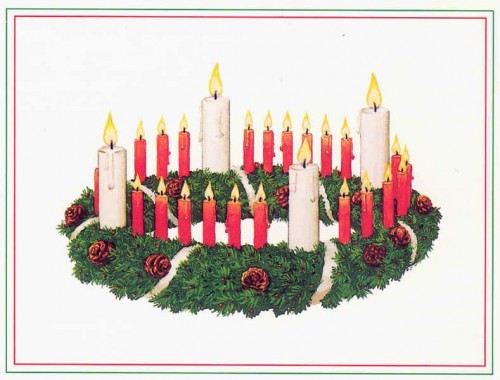
Germany
德国
Belsnickel is the German Santa’s dark enforcer, but he’s not nearly as evil as Krumpus or The Whipping Father. Instead he just wears fur from head to toe and gives good girls and boys candy and bad children coal and switches.
贝尔森克(Belsnickel)是德国圣诞老人的惩罚执行者,但他没克拉普斯或鞭子老爹那么邪恶。他从头到脚穿着毛皮,给好孩子们发糖果,给坏孩子们煤块和一顿鞭子。
Many are decorated with a wreath known as an “Adventskranz.” These wreaths have four candles which serve as a sort of weekly advent calendar, as each Sunday marks the opportunity to light a new candle.
许多地方都装饰有“降临节花环”(Adventskranz)。花环上有四只蜡烛,代表着降临节周历。每周日都点燃一只蜡烛。四只都被点燃时就意味着圣诞节到了。
On December 21, St. Thomas Day is believed to be the shortest day of the year and anyone who arrives late to work is called a “Thomas Donkey.” They are also given a cardboard donkey and made fun of throughout the rest of the day.
12月21日是“圣·托马斯日”(St. Thomas Day),据说是一年中最短的一天。任何在这一天上班迟到的人都被叫做“托马斯驴子”,他们还会收到一个纸板做的驴子,并且被嘲笑一整天。
Like many places in Europe, the Christmas tree is kept secret from the children until Christmas Eve. The parents bring the tree in, decorate it with candies, tinsel, lights and toys, put presents and plates of candy treats under the tree and then ring a bell signaling that the children can enter. The children then get to eat snacks and the whole family opens presents.
跟欧洲许多地方一样,在德国,圣诞树直到平安夜才能让孩子们看到。父母们把圣诞树拉出来,装饰上蜡烛、金属亮片、彩灯和玩具,把礼物和一碟碟的糖果放在树下,然后摇一下铃,表示孩子们可以进来了。小孩子们便可以吃小吃,全家一起打开礼物。